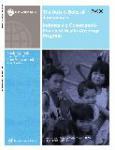
World Bank Publication
“Harimurti, Pandu; Pambudi, Eko; Pigazzini, Anna; Tandon, Ajay. 2013. The Nuts & Bolts of Jamkesmas, Indonesia’s Government-Financed Health Coverage Program for the Poor and Near-Poor. World Bank, Washington DC. © World Bank. https://openknowledge.worldbank.org/handle/10986/13304 License: CC BY 3.0 Unported.”
This case study describes and assesses Jamkesmas, Indonesia's government-financed health coverage program for the poor and near-poor. It provides a detailed description of the scope, depth, and breadth of coverage provided under Jamkesmas, and highlights ways in which the program interacts with the rest of Indonesia's health system. It also summarizes and discusses evidence on whether Jamkesmas is attaining its stated objectives of removing financial barriers and improving access to health care by the poor and near-poor, what could be improved, and what lessons can be learned from the experience of Jamkesmas that could help inform Indonesia's quest for universal coverage. The primary theme underlying the study is that supply-side constraints and supply-side subsidies have not been leveraged to increase the effectiveness of the Jamkesmas program. There are significant geographic deficiencies in the availability and quality of the basic benefits package, especially for those living in relatively remote and rural locations of the country, and this limits the effective availability of benefits for many Jamkesmas beneficiaries. The remainder of the case study is organized as follows.
Section two provides general background and information on health system outcomes in Indonesia. Section three is an overview of health care financing and delivery. Section four describes the institutional architecture of Jamkesmas. Section five highlights the process of targeting, identification, and enrolment of beneficiaries under the program. Section six focuses on the role of public financing. Section seven outlines the basic benefits package. Section eight provides an overview of the information environment of Jamkesmas. Section nine discusses the special theme of supply-side constraints and supply-side subsidies that dilute the effectiveness of the Jamkesmas program. Section ten discusses the pending agenda around some of the architectural and operational features of Jamkesmas in the context of universal coverage.
| Attachment | Size |
|---|---|
| 1.52 MB |
-

- Log in to post comments
- 678 reads


